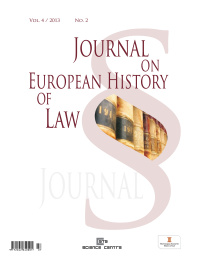Italy's mutilated victory after World War I as depicted in Polish historiography of the 20th century
Italy's mutilated victory after World War I as depicted in Polish historiography of the 20th century
Author(s): Marek BiałokurSubject(s): History
Published by: STS Science Centre Ltd
Keywords: Italy; Polish historiography in the XX century; Vittoria mutilate; The Paris Peace Conference.
Summary/Abstract: The article present the Italian embitterment after the First World War in terms of Polish historiography based on syntheses on the history of the 20th century. The term Vittoria mutilata, i.e. "mutilated victory", has become an inherent part of the early 20th century political mythology. It is believed to have been coined by Gabriele D’Annunzio (1863-1938), an Italian poet and novelist, after his seizure of the city of Fiume (Rijeka) in 1919, when he led a group of ardii (daredevils). Thus the Italian poet became actively involved in the politics of the country which he deemed betrayed – its victory mutilated – by its allies, the Triple Entente. Although D’Annunzio's term mainly referred to the nationalist sentiments of the time, it has quickly become popular in other circles of the Italian socjety. The myth of “mutilated victory” depicted on the pages of the discussed syntheses lent credence to the words of an Italian economist and sociologist, Vilfredo Pareto, who wrote in one of his syntheses that the chaos which engulfed Italy after World War I was an announcement of a new turning point.
Journal: Journal on European History of Law
- Issue Year: 5/2014
- Issue No: 1
- Page Range: 169-176
- Page Count: 8
- Language: English
- Content File-PDF

